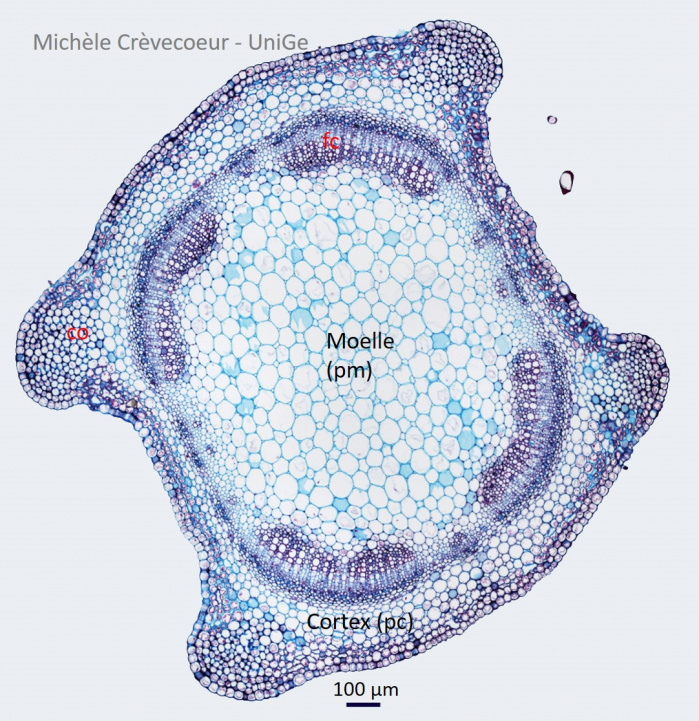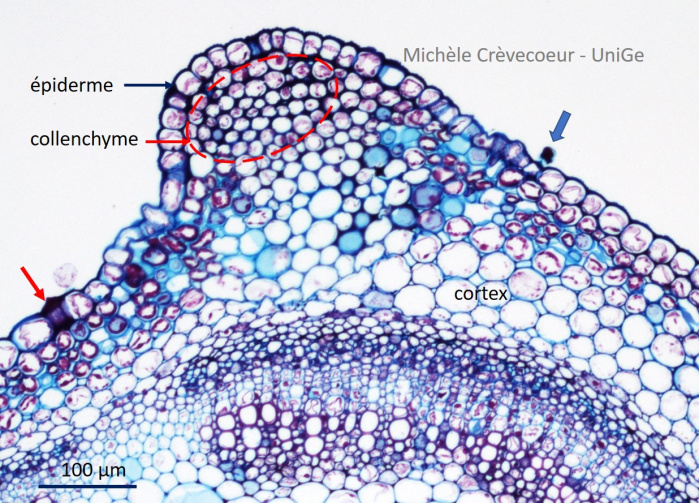Microphotographs of a cross section through a stem of Mentha piperita
Peppermint, an herbaceous of the Lamiaceae family, is a spontaneous cross between water mint (Mentha aquatica) and spearmint (Mentha spicata). The species name piperita refers to the spicy flavor of this plant. Stems are quadrangular with a reddish tone. Leaves and stems contain numerous common essential oils that evaporate easily at ambient temperature given to this plant its odor and its savor. The most essential oils of cultivated plants are menthol and menthone but there are also many other essential oils. Commercial mint oil is a mixture of different essential oils.
Micrographs here below illustrate paraffin sections,10 µm thick, made in stems fixed with FAA, and stained with astra blue – basic fuchsin.
General view of the cross section with the central pith constituted of parenchyma cells (medullar parenchyma; pm), the cortex constituted of parenchyma cells (cortical parenchyma; pc), the vascular bundles (fc) and collenchyma (co) a strengthening cellulosic tissue. The cells of the pith are larger than those of the cortex.

Below, part of the cross section with the peripheral tissues: epidermis with a stoma (red arrow) and a short glandular trichome (blue arrow), angular collenchyma (red dotted area; detail on photo below) located in the four corners of this stem.

Below, two detailed parts of the section. On the left, vascular bundles with xylem (x) towards the center and phloem (phl) outwards. Vascular bundles are on a single ring at the periphery of the pith. On the right: the epidermis with a thin cuticle (blue arrow) and angular collenchyma with cellulosic thickenings in the corner of the cells (red arrows).

As a reminder, this section shows the characteristics of a young dicotyledon stem (as other sections on this web site) : well developed pith, reduced cortex and vascular bundles on a single ring with superposed xylem and phloem.